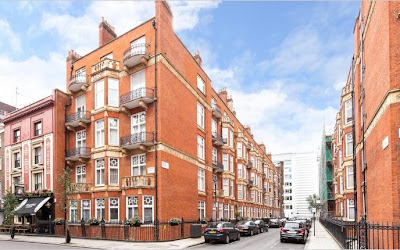Prices for the best residential properties in central London increased further in August 2012 on the back of consistently high demand from national and international homebuyers, according to the latest Knight Frank report.
Knight Frank's Prime Central London Sales Index for August 2012 reveals that the average price of a home in prime central London appreciated by 0.5 per cent in August compared to the previous month, taking annual growth to 9.9 per cent.
Prices have now increased by a staggering 49.9 per cent since the post credit-crunch low in March 2009, and are now at an all-time high - 14% above their previous peak in March 2008.
Liam Bailey, Knight Frank's head of residential research, said: "The strongest price growth over the past three months was seen in the £10m+ price bracket with an increase of 2.9%. The slowest growth, 1.4%, was seen in the £1m to £2.5m bracket, which could be explained by uncertainty surrounding the new stamp duty rate."
The study shows that the greatest property price rises have been seen in the likes of Knightsbridge, Notting Hill and Belgravia. This has been supported by continued demand from international buyers, notably those from Russia, India, France and Italy.
But other central London areas such as Baker Street, Hyde Park and Marylebone have also posted sharp property price gains, reflecting high demand from a wide range of home buyers, including many investors seeking to take advantage of soaring rental values.
Andrew Ellinas, director of leading estate agents Sandfords, said: "Marylebone, with its wealth of elegant properties and desirable High Street, has been attracting affluent buyers for a number of years. Demand for properties priced between £1.5 and £4million is intense, resulting in properties selling within an average of just seven days in Marylebone."
Aside from rising property prices, rents have also been increasing in these areas, reflecting high demand for property to rent in Marylebone, Baker Street and Hyde Park.
Knight Frank's Prime Central London Sales Index for August 2012 reveals that the average price of a home in prime central London appreciated by 0.5 per cent in August compared to the previous month, taking annual growth to 9.9 per cent.
Prices have now increased by a staggering 49.9 per cent since the post credit-crunch low in March 2009, and are now at an all-time high - 14% above their previous peak in March 2008.
Liam Bailey, Knight Frank's head of residential research, said: "The strongest price growth over the past three months was seen in the £10m+ price bracket with an increase of 2.9%. The slowest growth, 1.4%, was seen in the £1m to £2.5m bracket, which could be explained by uncertainty surrounding the new stamp duty rate."
The study shows that the greatest property price rises have been seen in the likes of Knightsbridge, Notting Hill and Belgravia. This has been supported by continued demand from international buyers, notably those from Russia, India, France and Italy.
But other central London areas such as Baker Street, Hyde Park and Marylebone have also posted sharp property price gains, reflecting high demand from a wide range of home buyers, including many investors seeking to take advantage of soaring rental values.
Andrew Ellinas, director of leading estate agents Sandfords, said: "Marylebone, with its wealth of elegant properties and desirable High Street, has been attracting affluent buyers for a number of years. Demand for properties priced between £1.5 and £4million is intense, resulting in properties selling within an average of just seven days in Marylebone."
Aside from rising property prices, rents have also been increasing in these areas, reflecting high demand for property to rent in Marylebone, Baker Street and Hyde Park.
David Newnes, director of LSL Property Services, commented: "The rental market is also entering its summer peak, as recent graduates and those with new jobs begin to look for new accommodation. With more tenants on the move, alongside long term underlying demand, fierce competition for properties is enabling landlords to increase rental prices to new highs."
As lending to those without substantial deposits remains depressed, demand from people looking for a house or flat to rent in Marylebone, Baker Street and Hyde Park among other surrounding areas is likely to rise in the long-term - providing further upwards momentum for rents.
As lending to those without substantial deposits remains depressed, demand from people looking for a house or flat to rent in Marylebone, Baker Street and Hyde Park among other surrounding areas is likely to rise in the long-term - providing further upwards momentum for rents.
This is likely to push people out to secondary areas in London, boosting demand for rental accommodation in Maida Vale, Little Venice, St Johns Wood, among a host of other desirable destinations offering easy access into Central London and the West End.
This in turn will almost certainly boost activity among property investors, especially landlords looking to cash-in on heightened demand by looking at the potential flats and houses for sale in Little Venice, Maida Vale, St John’s Wood and beyond.
"Areas such as Little Venice, Maida Vale and St Johns Wood can be seen to be prudent investments. Entry level pricing is lower and rental demand continues to be strong," said Yasser Elkaffass of Adam Hayes.
This in turn will almost certainly boost activity among property investors, especially landlords looking to cash-in on heightened demand by looking at the potential flats and houses for sale in Little Venice, Maida Vale, St John’s Wood and beyond.
"Areas such as Little Venice, Maida Vale and St Johns Wood can be seen to be prudent investments. Entry level pricing is lower and rental demand continues to be strong," said Yasser Elkaffass of Adam Hayes.
Wherever investors choose to buy property in London, there are fantastic investment prospects available, subject to necessary due diligence being undertaken.





